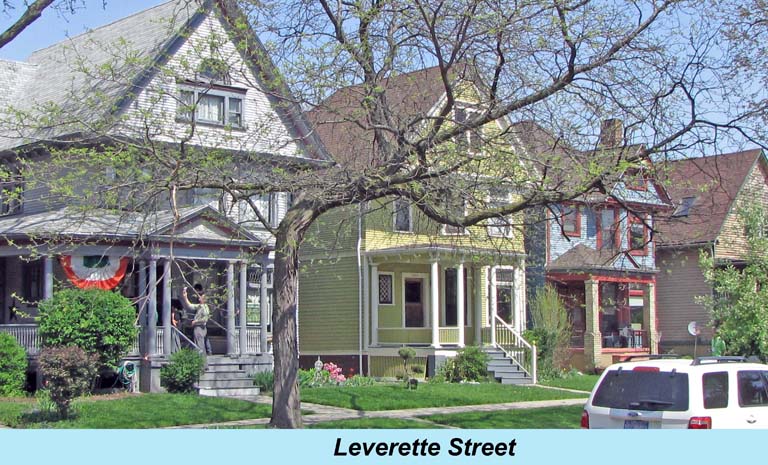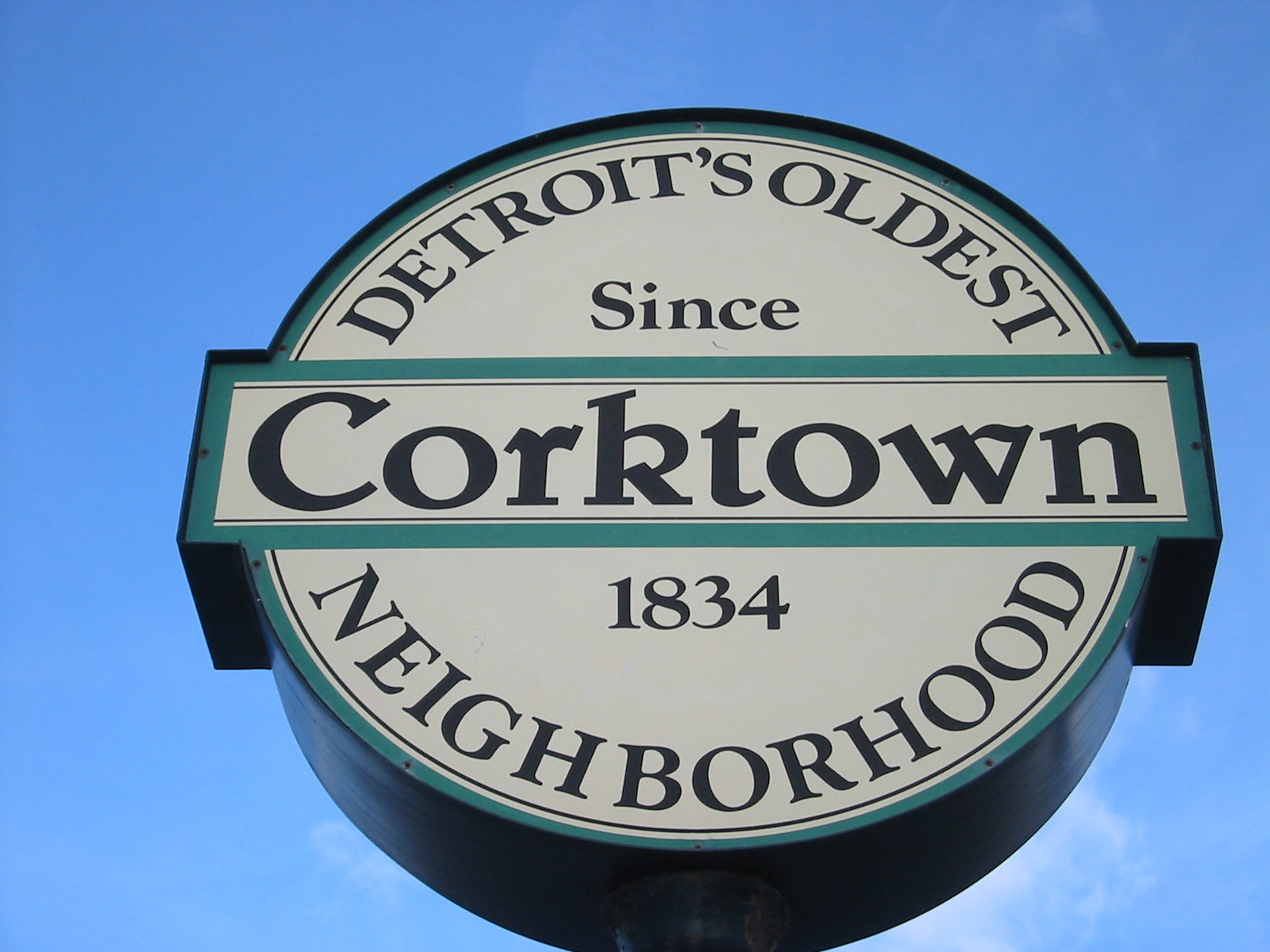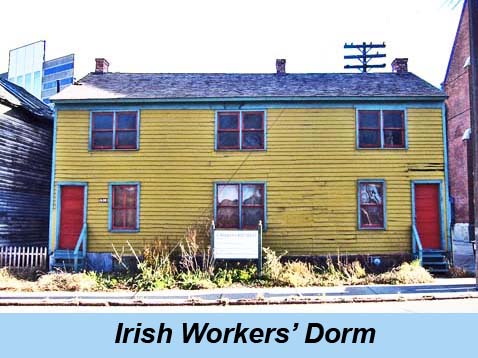
Corktown Historic District

This neighborhood is just southeast of downtown Detroit, bounded by Rosa
Parks Boulevard, Michigan Avenue, the John Lodge Expressway,
Porter Street, Trumbell and Bagley.
Two of the nearby landmarks are Tiger Stadium and the now empty Michigan Central Station.
The Irish were the first European immigrant group to come
to Detroit in substantial numbers. They arrived in the early 1830s after
the Erie Canal and steamboats on Lake Erie reduced the cost of transportation
to the remote Midwest. These Irish arrived almost one-half a generation
before
the potato famine induced a massive migration of Ireland's population to
England, Canada and the United States. Many of the Irish who came to the
US were so impoverished that they lacked the funds needed to move beyond
their ports of entry. Those Irish who sailed to Boston, Montreal or New
York and then came to Detroit likely had more economic resources than the typical Irish im migrant did.
migrant did.
Irish immigrants, primarily from the southern
port of Cork, settled in this area of Detroit, and hence, it is the
oldest ethnic neighborhood
in the city. The workingmen's homes in this area date from a variety of
eras beginning in the mid- to late-19th century. By the end of the 19th
century,
the Irish moved to more expensive areas of Detroit. A small population
of immigrants from Malta arrived in the 20th century making this, at
least
for some time, one of the few Maltese neighborhoods in this nation.
After World War II, city planners proposed demo lishing homes in this area
so that manufacturing plants could be located here. That plan was never
put into effect, but neither were there any major plans for redevelopment of this old neighborhood. By the 1990s, urban revivalists realized that
the old homes in this area might be quite attractive since they were located
close to the downtown. Thus, there has been a modest revival. As you walk
around this neighborhood of approximately 300 buildings, you will see a
variety of types of homes dating from several different eras in Detroit's
history. A few of the workingmen's cottages from the late 19th century
survive,
including a few in the attractive Queen Anne style. The single most important
structure is Most Holy Trinity Church.
lishing homes in this area
so that manufacturing plants could be located here. That plan was never
put into effect, but neither were there any major plans for redevelopment of this old neighborhood. By the 1990s, urban revivalists realized that
the old homes in this area might be quite attractive since they were located
close to the downtown. Thus, there has been a modest revival. As you walk
around this neighborhood of approximately 300 buildings, you will see a
variety of types of homes dating from several different eras in Detroit's
history. A few of the workingmen's cottages from the late 19th century
survive,
including a few in the attractive Queen Anne style. The single most important
structure is Most Holy Trinity Church.
Michigan Historical Register: P34985
National Register of Historical Places: Listed July 31, 1978
Photo: Ren Farley; April 2012
Return to City of Detroit Historic Designations
Return to Federal Register of Historic Districts